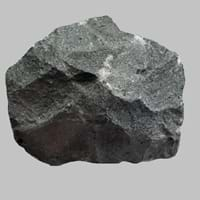Definition
Lignite is a soft brownish coal which shows traces of plants and is intermediate between bituminous coal and peat
Latite is an igneous, volcanic rock, with aphanitic-aphyric to aphyric-porphyritic texture
Discoverer
Unknown
Unknown
Etymology
From French, Latin lignum wood + -ite1
From the Latin word latium
Class
Sedimentary Rocks
Igneous Rocks
Sub-Class
Durable Rock, Soft Rock
Durable Rock, Medium Hardness Rock
Group
Not Applicable
Volcanic
Other Categories
Coarse Grained Rock, Fine Grained Rock, Medium Grained Rock, Opaque Rock
Fine Grained Rock, Opaque Rock
Texture
Amorphous, Glassy
Aphanitic to Porphyritic
Color
Black, Brown, Dark Brown, Grey, Light to Dark Grey
Black, Brown, Colourless, Green, Grey, Pink, White
Durability
Durable
Durable
Appearance
Veined or Pebbled
Rough
Interior Uses
Not Yet Used
Decorative Aggregates, Entryways, Interior Decoration
Exterior Uses
Not Yet Used
As Building Stone, As Facing Stone, Garden Decoration, Office Buildings
Other Architectural Uses
Not Yet Used
Curbing
Construction Industry
for Road Aggregate, Steel Production
As a Flux in the Production of Steel and Pig Iron, As a Sintering Agent in Steel Industry to process Iron Ore, As Dimension Stone, Cement Manufacture, for Road Aggregate, Making natural cement, Manufacture of Magnesium and Dolomite Refractories
Medical Industry
Not Yet Used
Not Yet Used
Antiquity Uses
Not Yet Used
Artifacts, Monuments, Sculpture
Commercial Uses
Electricity Generation
An Oil and Gas Reservoir, As a Feed Additive for Livestock, Metallurgical Flux, Soil Conditioner, Source of Magnesia (MgO)
Types
Xyloid Lignite or Fossil Wood and Compact Lignite or Perfect Lignite
Rhomb porphyries
Features
Generally rough to touch, Helps in production of Heat and Electricity, Used as fossil fuel
Host Rock for Lead
Archaeological Significance
Monuments
Not Yet Used
Used
Famous Monuments
Not Applicable
Data Not Available
Sculpture
Not Yet Used
Used
Famous Sculptures
Not Applicable
Data Not Available
Figurines
Not Yet Used
Used
Formation
Coal formation takes place due to accumulation of plant debris in a swamp environment. The Coal formation process continues, as peat turns into lignite brown or black coal at increasing heat and pressure.
Latite is a fine-grained, hard rock which is a type of metasomatite, essentially altered basalt. It forms with or without crystallization, either below the surface as intrusive rocks or on the surface as extrusive rocks.
Mineral Content
Not Available
Alkali feldspar, Biotite, Plagioclase, Pyroxene
Compound Content
Carbon, Hydrogen, Nitrogen, Oxygen, Sulphur
CaO, Cl, MgO
Types of Metamorphism
Not Applicable
Burial Metamorphism, Cataclastic Metamorphism
Types of Weathering
Biological Weathering, Chemical Weathering, Mechanical Weathering
Biological Weathering, Chemical Weathering, Mechanical Weathering
Types of Erosion
Chemical Erosion, Water Erosion, Wind Erosion
Chemical Erosion, Water Erosion, Wind Erosion
Grain Size
Medium to Fine Coarse Grained
Fine Grained
Fracture
Conchoidal
Conchoidal
Porosity
Highly Porous
Very Less Porous
Luster
Dull to Vitreous to Submetallic
Subvitreous to Dull
Compressive Strength
Not Available
Cleavage
Non-Existent
Perfect
Toughness
Not Available
2.7
Specific Gravity
1.1-1.4
2.86
Transparency
Opaque
Translucent
Density
800-801 g/cm3
2.8-2.9 g/cm3
Resistance
Heat Resistant
Heat Resistant, Pressure Resistant
Deposits in Eastern Continents
Asia
Bangladesh, Burma, Cambodia, China, India, Indonesia, Kazakhstan, Malaysia, Mongolia, Pakistan, Turkey, Vietnam
Not Yet Found
Africa
Botswana, Kenya, Morocco, Mozambique, South Africa, Tanzania
Not Yet Found
Europe
Belgium, Bulgaria, England, France, Germany, Greece, Hungary, Kosovo, Netherlands, Norway, Poland, Romania, Serbia, Slovakia, Slovenia, The Czech Republic, Ukraine, United Kingdom
Bulgaria
Others
Not Yet Found
Not Yet Found
Deposits in Western Continents
North America
Canada, Mexico, USA
USA
South America
Brazil, Chile, Colombia, Venezuela
Not Yet Found
Deposits in Oceania Continent
Australia
New South Wales, Queensland, Victoria
Not Yet Found
All about Lignite and Latite Properties
Know all about Lignite and Latite properties here. All properties of rocks are important as they define the type of rock and its application. Lignite belongs to Sedimentary Rocks while Latite belongs to Igneous Rocks.Texture of Lignite is Amorphous, Glassy whereas that of Latite is Aphanitic to Porphyritic. Lignite appears Veined or Pebbled and Latite appears Rough. The luster of Lignite is dull to vitreous to submetallic while that of Latite is subvitreous to dull. Lignite is available in black, brown, dark brown, grey, light to dark grey colors whereas Latite is available in black, brown, colourless, green, grey, pink, white colors. The commercial uses of Lignite are electricity generation and that of Latite are an oil and gas reservoir, as a feed additive for livestock, metallurgical flux, soil conditioner, source of magnesia (mgo).










